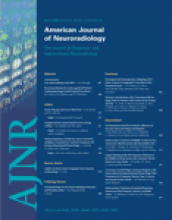Abstract
BACKGROUND AND PURPOSE: Traditionally cerebellar functions are thought to be related to control of tone, posture, gait, and coordination of skilled motor activity. However, there is an increasing body of evidence implicating the cerebellum in cognition, language, memory, and motor learning. Preterm infants are at increased risk of neurodevelopmental delay, cognitive dysfunction, and behavioral and emotional disturbances. The role of the cerebellum in these adverse outcomes is unclear.
Objective:The objective of this study was to determine whether absolute cerebellar volumes differ between term-equivalent preterm infants and term-born control infants and to assess whether cerebellar volume is influenced by any possible antenatal, perinatal, and postnatal factors.
METHODS:The study compared the MR imaging cerebellar volume by using a manual quantification program of 113 preterm infants at term-equivalent age and 15 term-born control infants.
RESULTS:The median cerebellar volume of preterm at term-equivalent age was 25.4 cm3 and that of term-born control infants was 26.9 cm3. On initial analysis, there was a significant median difference of 2.0 cm3 (95% CI, 1.2 cm3 to 2.7 cm3) (2-sided P < .0001). However multiple regression analysis of perinatal variables showed that only infants with supratentorial lesions (P = .003) were significantly associated with the reduction in cerebellar volumes. The median cerebellar volumes were the following: supratentorial lesions, 18.9 cm3; no supratentorial lesions, 26.1 cm3; and term infants, 26.9 cm3 (analysis of variance, P < .0001). Hence, there was no significant difference in cerebellar volumes of preterm infants at term-equivalent age in the absence of supratentorial lesions. The median vermal volumes were 0.7 cm3 and were significantly related to cerebellar volumes both in preterm infants with and without lesions and in term-control infants.
CONCLUSION:Premature infants at term-equivalent age have similar total cerebellar and vermal volumes compared with term infants in the presence of normal brain imaging. Reduced cerebellar volume in preterm infants at term-equivalent age is seen in association with supratentorial pathology such as hemorrhagic parenchymal infarction, intraventricular hemorrhage with dilation, and periventricular leukomalacia.
- Copyright © American Society of Neuroradiology












